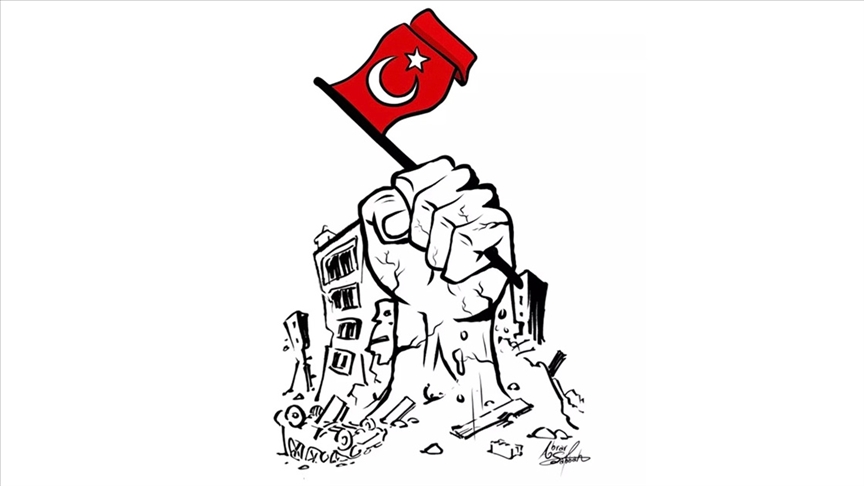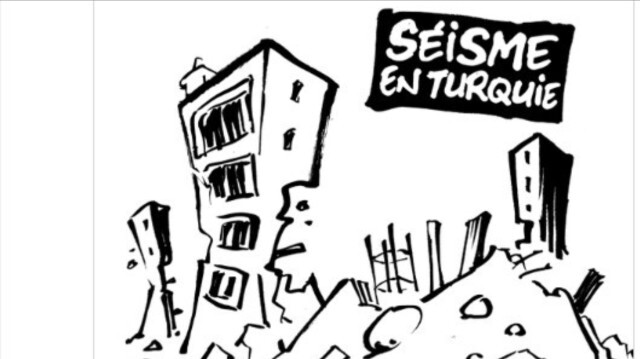The Battle of the Trench was the last attack of the Quraishis on Medina. The name of this battle comes from the trenches that were dug around Medina to prevent the enemy attack. Apart from the Quraishis, Arab tribes, such as the Gatafan, the Fazara, the Sulaym, the Qinana, the Sakif, and the Banu Nadir had been expelled from Medina; the Banu Qurayza Jews in Medina participated in this battle as well. For this reason, the battle is also known as The Battle of al-Ahzab (the groups or tribes). The Battle of the Trench differs from the previous battles in terms of politics, strategy and tactics. It was a battle fought not against a single and specific enemy, but was rather a defensive battle fought against all enemy groups in the Arabian Peninsula. This battle is important due to the fact that the Jewish tribes, the Quraishis and the Arab tribes allied together in the realization that they could not defeat the Muslims alone.
Prominent figures belonging to the Banu an-Nadir, such as Huyay ibn Ahtab and Sallam ibn Abu'l-Huqayq, who had settled in Khaybar after being expelled from Medina, called upon the Quraishis of Mecca and invited them to annihilate the Muslims together. An alliance was thus formed and they created a large army by allying with the surrounding tribes. When the Prophet learned of this development, he conferred with his Companions on how to treat the threat. A Persian Companion, called Salman al-Farisi, advised digging a trench alongside Medina, which otherwise was open to cavalry attack. The Prophet also participated in the digging of the trench. The trench was completed in several weeks thanks to the great efforts of the Muslims. According to the estimates of Muhammad Hamidullah, the trench was 5,5 km in length, 9 m in width, 4,5 m in depth.
After the Muslims had finished digging the trench, the enemy units, led by Abu Sufyan ibn Harb, whose numbers were 10,000 (or 12,000), reached Medina and camped in a place to the north of Medina where the Battle of Uhud had earlier taken place. The banner of the idolaters was carried by Uthman ibn Talha from the Banu Abduddar. The number of Muslim soldiers was about 3,000. Zayd ibn Haritha was the flagman for the emigrants while Sa'd ibn Ubada was the flagman of the Companions. The Prophet knew that they were outnumbered against this army and he decided to launch a defensive war, resisting the attack of the enemy against the city instead of facing the coalition in a pitched battle outside. He ordered that the women and children stay in the castles and fortresses. Prophet Muhammad built his headquarters on the edges of Mount Sal, facing the trench. Thus they were defended by Mount Sal from behind. The Prophet placed guards at points where the trench was not very deep and at some entrance points. This strategy was to show the strength of the Muslims and make the Quarishis feel that they were dependent on Him for the trade route; he hoped that they would embrace Islam and the new formation in Medina.
The Quraishis were surprised when they saw the trench, which was not known in Arabia as defensive method. During the siege, both sides shot arrows and threw stones at each other. The Islamic army not only tried to prevent the enemy army from infiltrating into the city from other points, but they also tried to weaken them along the trench. The enemy units attacked in turns. These units were commanded by famous warriors such as Abu Sufyan, Hubayra ibn Abu Wahb, Ikrima ibn Abu Jahil, Umar's brother Dirar ibn Khattab, Khaled ibn Walid and Amr ibn As. One day the tent of the Prophet was heavily attacked by arrows, but this attack failed, as the Companions counterattacked with arrows and stones.
In the course of the battle, several cavalries passed over the trench at a narrow spot onto the side of the Islamic army. One of these was Amr ibn Abduved, who was known for his courage and bravery. Amr ibn Abduved desired that a warrior from the Muslims step out for hand-to-hand combat. Young Ali came forward to fight with him. The Prophet gave his sword to Ali and wrapped his turban around him. Amr underestimated Ali and he was killed by Ali with a sweeping blow of the sword. Nawfal ibn Abdullah died, falling into the trench. The other horsemen rapidly retreated back across the trench.
Although there were some fights during the siege, which lasted in total about twenty days, the allied forces did not achieve any results. Due to the fact that the idolaters had prepared for a short battle, the food supplies of their warriors and horses soon ran out. Meanwhile, the food and feed carried by twenty camels sent by the Khaybar Jews were intercepted by the Muslims. During a rain storm the people of Mecca underwent difficult times; their tents were destroyed by the storm and they panicked. It was the end of the month of Shawwal; Dhu al-Qi'dah, the first of the sacred months, was fast approaching and the hajj season was close. Due to all these factors, Abu Sufyan raised the siege and returned to Medina, realizing that he could not win any significant gains (Dhu al-Qi'dah 5/April 627).
Six Muslims were martyred and eight enemy soldiers were killed in the Battle of the Trench, which was a turning point in Islamic history. The Muslims suffered many obstacles during the Battle, and they were worried about the large enemy army. Prophet Muhammad never missed any prayers during any of the confrontations, and the fact that he now had to perform the noon, afternoon, evening and night prayers together shows that he and his Companions were fighting under very harsh conditions. Surah Al-Ahzab, which gives this battle its name, mentions the fear of the Muslims of the allied armies and states that this was a test of faith; it goes on to say that Allah supported the Muslims with unseen armies (al-Ahzab 33/9-12, 25).
With the Battle of the Trench the idolaters' last attempt to kill the Prophet and the Muslims failed. Prophet Muhammad implemented a policy that would create hostility between the Jews and their Arab allies, and he received a great deal of intelligence. This played a great role in defeating the enemy. One of the measures taken by the Prophet to weaken the enemy alliance was related to Nu'aym ibn Mas'ud. Nu'aym ibn Mas'ud was the leader of the Banu Ascha tribe. He had become Muslim but he did not tell this to anyone. Upon a request from the Prophet s request, Mas'ud had sown dissension throughout the ranks of the Banu Qurayza and the Quraishis, and weakened the trust among each group.
After this battle, Prophet Muhammad revised his battle strategy. It was now understood seen that acting immediately before the enemy forces had had a chance to form battle preparation against the Muslims, and to strike rapidly was important. Accordingly a campaign was carried out against the Banu Qurayza.
Subscribe to:
Post Comments (Atom)









No comments:
Post a Comment